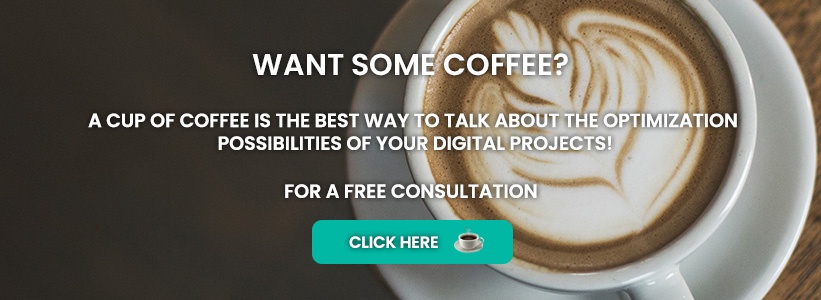You played by the rules for increased website traffic: With relevant content and an SEO strategy, you drew many visitors from your target group to your site. In the next step, learn how to nurture these visitors into becoming Sales Qualified Leads.
A lead is, in a nutshell, an identifiable contact information. If prospects provide their contact information, you have the opportunity to reach them via other channels, such as e-mail. Lead generation is crucial for the success of your Inbound Marketing initiatives, because this is the starting point of the Lead Nurturing journey. As a result leads are qualified and finally converted into customers.
Lead generation is central to the success of your inbound marketing initiatives because it is here that the journey of lead nurturing begins. This is where leads are further developed and finally converted into customers. Lead Nurturing is driven by engaging leads with a direct approach and targeted content. Leads are then qualified by passing the three stages of the inbound methodology: Awareness (problem detection), Consideration (assessing solutions) and Decision (purchase decision). Leads need to be nurtured with content to get to the last stage: Choosing your company’s product. However, in order for the contacts to flourish, they must be generated at first.
THE GREENHOUSE: PROVIDING THE INFRASTRUCTURE
For acquiring your prospect’s contact information, there are at least two things you need to provide:
- A landing page with a contact form
- An incentive to fill in the form: Content offers which are relevant for your prospect
Rule of thumb: The amount of information you ask from a prospect, has to be related to the value of the content offer.
In any case, name and mail address should be acquired of every prospect. Every additional information helps to have a more precise Lead Nurturing. Especially valuable: Information on the branch of your lead and their function in the respective company. Based on this, it is easier to estimate the stage that the lead is in and tailor the nurturing process spot.on.
Lead Generation can take place at any point of the marketing funnel and because of that content offers can also be extremely versatile:
- Whitepapers
- Checklists
- Reports
- eBooks
- Product demonstrations
- Analyses
- Webinars
- Presentations etc.
After a prospect turned into a lead, it is important to take a closer look at the content they consume to find out, how to further qualify the lead.
There are two types of leads based on their position in the Lead Nurturing:
- Marketing Qualified Lead: This contact works in the desired industry or corresponds to your customer persona in another way – in any case, this lead has the potential to turn into a customer.
- Sales Qualified Lead: Qualified and nourished with relevant content, these leads are not far from the purchasing decision and ready to be turned over to your sales team.
"This could be interesting for you" – Qualification now means to provide the lead with the content that draws them closer to the sales pitch. Lead Nurturing also offers an elegant solution to address a lead on a personal level and to feed it in a targeted way at any given point during the inbound stages. In this way, different needs of each phase can be addressed separately:
|
Awareness |
Consideration |
Decision |
|
Overview |
Deeper insights |
Tangible advantages |
|
|
|
|
|
|
|
|
|
Table based on: https://www.divia.de/blog/3-tipps-für-die-zuordnung-von-content-im-inbound-marketing
The classical journey of a lead could look like this: During Awareness Stage, a prospect has discovered challenges and also its possibilities. It found your website and turned into a lead. In the Consideration Stage, the lead engages with rather specific questions and searches for precise answers while browsing through articles that compare products. To nurture this lead to reach the Decision Stage, you could offer a demo version. When the lead invests the time to try out your product, it’s a good sign that it’s ready for a call of your sales team. To draw the leads’ attention to the appropriate content at the appropriate moment can be the decisive factor for their purchase decision.
TIME TO HARVEST: MONITOR & SCORE LEADS
You can measure the fruits of your labour using various key figures. However, the focus is on the performance figures of the landing page and content offer: How high is the conversion rate? How many people decided to fill out the contact form? How many people didn’t?
Low rates can only mean one of two reasons: Either the communication was not sufficient, or the content offer was not attractive enough. In these cases, the strategy needs to be readjusted.
There are two ways to determine, whether a lead has entered the decision phase and can be considered Sales Qualified:
- Emotional evaluation
- Lead scoring
In both cases, the content consumption of the lead is monitored. In the emotional approach, the lead is turned over to the sales department according to the personal assessment of the marketing employees. This way of lead scoring is therefore suitable for companies with smaller, easily manageable customer databases.
Lead scoring, on the other hand, describes a quantified approach. Behind every lead scoring is a sophisticated system that assigns different scores to various parts of the content consumption. In this way, different articles from the inbound phases can be assigned points of different values – and even key figures, such as time spent on an article, can be quantified. Once a lead has acquired a certain score, it can be regarded as Sales Qualified.
In many companies, the quantified approach is an evolutionary process of the emotional approach. The decision, which method should be brought into action, has to be done on a case-by-case basis. You can always count on being surprised: Sometimes a lead is in the Decision Stage, although his content consumption would ascribe him to an earlier stage.
If the leads were still a sprout at the beginning, some of them have flourished and developed to be Sales Qualified – they are ready for the next evolutionary stage: The conversion of the lead into a customer. Marketing Inbound – Part 3 will tell you more about that. Stay tuned!
Credit: ©adam121/Adobe Stock


